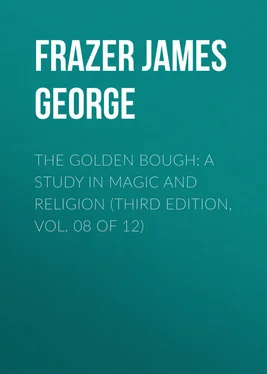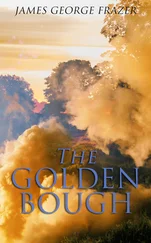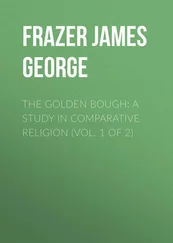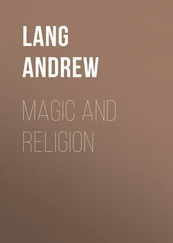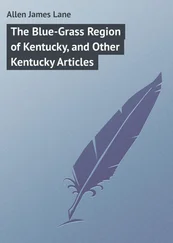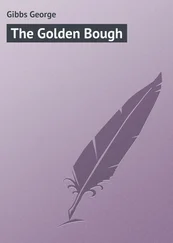James Frazer - The Golden Bough - A Study in Magic and Religion (Third Edition, Vol. 08 of 12)
Здесь есть возможность читать онлайн «James Frazer - The Golden Bough - A Study in Magic and Religion (Third Edition, Vol. 08 of 12)» — ознакомительный отрывок электронной книги совершенно бесплатно, а после прочтения отрывка купить полную версию. В некоторых случаях можно слушать аудио, скачать через торрент в формате fb2 и присутствует краткое содержание. Жанр: foreign_religion, foreign_antique, foreign_prose, на английском языке. Описание произведения, (предисловие) а так же отзывы посетителей доступны на портале библиотеки ЛибКат.
- Название:The Golden Bough: A Study in Magic and Religion (Third Edition, Vol. 08 of 12)
- Автор:
- Жанр:
- Год:неизвестен
- ISBN:нет данных
- Рейтинг книги:4 / 5. Голосов: 1
-
Избранное:Добавить в избранное
- Отзывы:
-
Ваша оценка:
- 80
- 1
- 2
- 3
- 4
- 5
The Golden Bough: A Study in Magic and Religion (Third Edition, Vol. 08 of 12): краткое содержание, описание и аннотация
Предлагаем к чтению аннотацию, описание, краткое содержание или предисловие (зависит от того, что написал сам автор книги «The Golden Bough: A Study in Magic and Religion (Third Edition, Vol. 08 of 12)»). Если вы не нашли необходимую информацию о книге — напишите в комментариях, мы постараемся отыскать её.
The Golden Bough: A Study in Magic and Religion (Third Edition, Vol. 08 of 12) — читать онлайн ознакомительный отрывок
Ниже представлен текст книги, разбитый по страницам. Система сохранения места последней прочитанной страницы, позволяет с удобством читать онлайн бесплатно книгу «The Golden Bough: A Study in Magic and Religion (Third Edition, Vol. 08 of 12)», без необходимости каждый раз заново искать на чём Вы остановились. Поставьте закладку, и сможете в любой момент перейти на страницу, на которой закончили чтение.
Интервал:
Закладка:
James George Frazer
The Golden Bough: A Study in Magic and Religion (Third Edition, Vol. 08 of 12)
Chapter IX. Ancient Deities of Vegetation as Animals
§ 1. Dionysus, the Goat and the Bull
However we may explain it, the fact remains that in peasant folk-lore the corn-spirit is very commonly conceived and represented in animal form. May not this fact explain the relation in which certain animals stood to the ancient deities of vegetation, Dionysus, Demeter, Adonis, Attis, and Osiris?
To begin with Dionysus. We have seen that he was represented sometimes as a goat and sometimes as a bull. 1 1 See above, vol. i. pp. 16 sqq.
As a goat he can hardly be separated from the minor divinities, the Pans, Satyrs, and Silenuses, all of whom are closely associated with him and are represented more or less completely in the form of goats. Thus, Pan was regularly portrayed in sculpture and painting with the face and legs of a goat. 2 2 Herodotus, ii. 46; L. Preller, Griechische Mythologie , 4 i. (Berlin, 1894), pp. 745 sq. ; K. Wernicke, in W. H. Roscher's Lexikon der griech. und röm. Mythologie , iii. 1407 sqq.
The Satyrs were depicted with pointed goat-ears, and sometimes with sprouting horns and short tails. 3 3 L. Preller, Griechische Mythologie , 3 i. 600; W. Mannhardt, Antike Wald- und Feldkulte , p. 138.
They were sometimes spoken of simply as goats; 4 4 W. Mannhardt, op. cit. p. 139.
and in the drama their parts were played by men dressed in goatskins. 5 5 Julius Pollux, iv. 118.
Silenus is represented in art clad in a goatskin. 6 6 W. Mannhardt, op. cit. pp. 142 sq.
Further, the Fauns, the Italian counterpart of the Greek Pans and Satyrs, are described as being half goats, with goat-feet and goat-horns. 7 7 Ovid, Fasti , ii. 361, iii. 312, v. 101; id. , Heroides , iv. 49.
Again, all these minor [pg 002] goat-formed divinities partake more or less clearly of the character of woodland deities. Thus, Pan was called by the Arcadians the Lord of the Wood. 8 8 Macrobius, Sat. i. 22. 3.
The Silenuses associated with the tree-nymphs. 9 9 Homer, Hymn to Aphrodite , 262 sqq.
The Fauns are expressly designated as woodland deities; 10 10 Pliny, Nat. Hist. xii. 3; Ovid, Metam. vi. 392; id. , Fasti , iii. 303, 309; Gloss. Isid. Mart. Cap. ii. 167, cited by W. Mannhardt, Antike Wald- und Feldkulte , p. 113.
and their character as such is still further brought out by their association, or even identification, with Silvanus and the Silvanuses, who, as their name of itself indicates, are spirits of the woods. 11 11 Pliny, Nat. Hist. xii. 3; Martianus Capella, ii. 167; Augustine, De civitate Dei , xv. 23; Aurelius Victor, Origo gentis Romanae , iv. 6.
Lastly, the association of the Satyrs with the Silenuses, Fauns, and Silvanuses, 12 12 Servius on Virgil, Ecl. vi. 14; Ovid, Metam. vi. 392 sq. ; Martianus Capella, ii. 167.
proves that the Satyrs also were woodland deities. These goat-formed spirits of the woods have their counterparts in the folk-lore of Northern Europe. Thus, the Russian wood-spirits, called Ljeschie (from ljes , “wood”) are believed to appear partly in human shape, but with the horns, ears, and legs of goats. The Ljeschi can alter his stature at pleasure; when he walks in the wood he is as tall as the trees; when he walks in the meadows he is no higher than the grass. Some of the Ljeschie are spirits of the corn as well as of the wood; before harvest they are as tall as the corn-stalks, but after it they shrink to the height of the stubble. 13 13 W. Mannhardt, Baumkultus , pp. 138 sq. ; id. , Antike Wald- und Feldkulte , p. 145.
This brings out – what we have remarked before – the close connexion between tree-spirits and corn-spirits, and shews how easily the former may melt into the latter. Similarly the Fauns, though wood-spirits, were believed to foster the growth of the crops. 14 14 Servius on Virgil, Georg. i. 10.
We have already seen how often the corn-spirit is represented in folk-custom as a goat. 15 15 Above, vol. i. pp. 281 sqq.
On the whole, then, as Mannhardt argues, 16 16 Antike Wald- und Feldkulte , ch. iii. pp. 113-211. In the text I have allowed my former exposition of Mannhardt's theory as to ancient semi-goat-shaped spirits of vegetation to stand as before, but I have done so with hesitation, because the evidence adduced in its favour appears to me insufficient to permit us to speak with any confidence on the subject. Pan may have been, as W. H. Roscher and L. R. Farnell think, nothing more than a herdsman's god, the semi-human, semi-bestial representative of goats in particular. See W. H. Roscher's Lexikon der griech. und röm. Mythologie , iii. 1405 sq. ; L. R. Farnell, The Cults of the Greek States , v. (Oxford, 1909) pp. 431 sqq. And the Satyrs and Silenuses seem to have more affinity with horses than with goats. See W. H. Roscher's Lexikon der griech. und röm. Mythologie , iv. 444 sqq.
[pg 003] the Pans, Satyrs, and Fauns perhaps belong to a widely diffused class of wood-spirits conceived in goat-form. The fondness of goats for straying in woods and nibbling the bark of trees, to which indeed they are most destructive, is an obvious and perhaps sufficient reason why wood-spirits should so often be supposed to take the form of goats. The inconsistency of a god of vegetation subsisting upon the vegetation which he personifies is not one to strike the primitive mind. Such inconsistencies arise when the deity, ceasing to be immanent in the vegetation, comes to be regarded as its owner or lord; for the idea of owning the vegetation naturally leads to that of subsisting on it. We have already seen that the corn-spirit, originally conceived as immanent in the corn, afterwards comes to be regarded as its owner, who lives on it and is reduced to poverty and want by being deprived of it. 17 17 Above, vol. i. pp. 231 sqq.
Thus the representation of wood-spirits in the form of goats appears to be both widespread and, to the primitive mind, natural. Therefore when we find, as we have done, that Dionysus – a tree-god – is sometimes represented in goat-form, 18 18 Above, vol. i. pp. 17 sq.
we can hardly avoid concluding that this representation is simply a part of his proper character as a tree-god and is not to be explained by the fusion of two distinct and independent worships, in one of which he originally appeared as a tree-god and in the other as a goat. If such a fusion took place in the case of Dionysus, it must equally have taken place in the case of the Pans and Satyrs of Greece, the Fauns of Italy, and the Ljeschie of Russia. That such a fusion of two wholly disconnected worships should have occurred once is possible; that it should have occurred twice independently is improbable; that it should have occurred thrice independently is so unlikely as to be practically incredible.
Dionysus was also figured, as we have seen, 19 19 Above, vol. i. pp. 16 sq.
in the shape of a bull. After what has gone before we are naturally led to expect that his bull form must have been only another [pg 004] expression for his character as a deity of vegetation, especially as the bull is a common embodiment of the corn-spirit in Northern Europe; 20 20 Above, vol. i. pp. 288 sqq.
Интервал:
Закладка:
Похожие книги на «The Golden Bough: A Study in Magic and Religion (Third Edition, Vol. 08 of 12)»
Представляем Вашему вниманию похожие книги на «The Golden Bough: A Study in Magic and Religion (Third Edition, Vol. 08 of 12)» списком для выбора. Мы отобрали схожую по названию и смыслу литературу в надежде предоставить читателям больше вариантов отыскать новые, интересные, ещё непрочитанные произведения.
Обсуждение, отзывы о книге «The Golden Bough: A Study in Magic and Religion (Third Edition, Vol. 08 of 12)» и просто собственные мнения читателей. Оставьте ваши комментарии, напишите, что Вы думаете о произведении, его смысле или главных героях. Укажите что конкретно понравилось, а что нет, и почему Вы так считаете.
